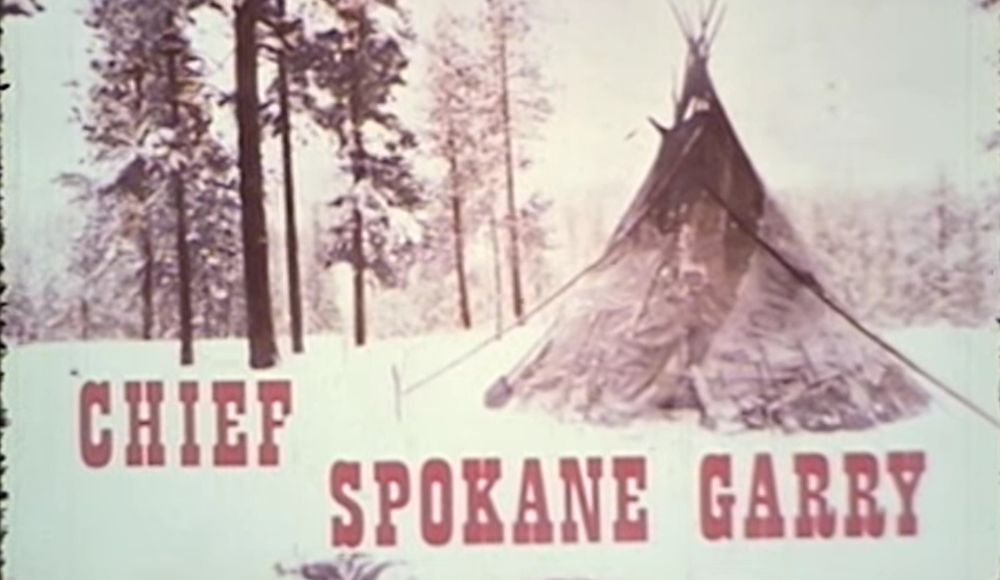In 1811 a young boy was born in the northeast corner of Washington State. He was later given the Euro-American name of Garry, later Gary, but the family was known as Illim-Spokanee. From that long-ago event we can trace the name Spokane, today’s capitol of the Pacific Northwest Inland Empire. Gary became a link between two cultures, a role he did not choose.
In later years Gary described a prophesy his father made: one day a people from the east would arrive with new ideas and dreams. Having seen a few “King George” men (British) and the occasional “Boston” (American), Gary’s father believed that their own traditional known world would soon end. At about age 14, young Gary was “recruited” to attend a white missionary institution, or school, managed by the Church Missionary Society of the Church of England. Besides the Ten Commandments, Gary was taught geography, English, writing skills, and the difference between a Catholic and a Protestant.
The Anglican Catechism, Book of Common Prayer, and church hymns became his daily academic diet. Gary and his fellow students appeared to absorb and enjoy this strange experience, despite the fact they were force-fed the new culture and had little personal freedom. After four years, in 1829, Gary returned home to find that his father had died, and his friends dispersed.
Encouraged by his Christian teachers, Gary led his family and friends in saying grace at meals, memorizing the Ten Commandments, and saying the Lord’s Prayer. Because Gary was particularly talented and popular, he attracted followers from the nearby Colville, Nez Perce, Coeur D’ Alene, Pend D’ Oreille, Flathead, and Okanogan tribes. Roaming Catholic priests noted with some envy that Gary’s simple lessons were effective, in part because listeners were hearing these new subjects from one of their own. One Native observer said that “he told us of a God above . . . he said to us, if we were good, that when we died, we would go up above and see God.”
Spokan Gary’s version of Christian tenets, often mixed with Native chants, shaking, monotonic hymns, bells, and the uplifting of arms, attracted Native participants, while occasionally annoying white visitors. One critic of Gary’s work was the Reverend Samuel Parker, who had been sent to Oregon in 1835 by the American Board of Foreign Missions.
Parker observed that at a service he held for a band of Nez Perce, his attendees dutifully showed up in their best attire, kneeled or sat in a semi-circle, and then proceeded to murmur and hum throughout the service. Parker avoided making an issue of this activity but concluded that Gary’s influence and teaching caused the irregular behavior among his congregants.
Other itinerant preachers arrived on the scene, followed by the 1847 Native attack on the Whitman Mission (near today’s Walla Walla) resulting in the decline of Spokan Gary’s influence. In fact, some of Gary’s followers concluded that not all white men and women lived by Christian ethics. In turn, Native prophets, many holding anti-white views, gained favor with Native populations, especially along the Columbia River as it flowed through eastern Washington and Oregon. Famine, disease, alcohol and other negative influences appeared among Gary’s adherents. As western Native reservations were established in the 1870s-80s – literally forced on the local populations – the decline of ancient Native habits, styles, and traditions accelerated.
Gary remained active in opposing these changes, including decrying the presence of Roman Catholic churches and missions, while simultaneously encouraging religious (Protestant) revival. In later life, often referred to as “Chief Gary” by many Euro-Americans, he nevertheless felt the effects of aging and the confusing clash of religious and secular influences. It was also clear to Gary that his people’s land base was vanishing, the traditional backdrop to the Native world.
In the late 1880s, he had to cope with personal problems such as establishing title to a small piece of property he owned. He and his wife, who was going blind, lived in a teepee, virtually destitute. Surrounded by city streets, saloons, flour mills, and plate glass windows, Gary continued to wait for a $100 annuity promised by the American Congress. On January 13, 1892, Spokan Gary died.
Despite his life-long reverence to the Anglican faith, the Episcopal Church in Spokane had never heard of him. Instead, friends of the First Presbyterian Church of Spokane arranged a simple funeral. Injustices did not abate after his death. His lands were seized, a few Cayuse horses he owned were stolen, and his blind widow Nina was removed to the Coeur D’ Alene reservation. Her remains were later interred in Potter’s Field at Fairfield, Washington. It would be years before Spokan Gary would be honored as a defender of his people.
Gary’s old father, Illim-Spokanee, had told the truth: one day a people of different color “would come and teach his people many things.”
Discover more from Post Alley
Subscribe to get the latest posts sent to your email.
